
Editor's note: Several subjects featured in these stories granted interviews on the condition that The Desert Sun not publish their names or photograph their faces, due to safety concerns. The reporters conducted all interviews with asylum seekers and migrants in Spanish and translated their quotes for this report. More about this series.
Román Lara Cuevas awoke to gunshots. The sound ricocheted through Quetzalcoatlán de las Palmas, an isolated community in the lush mountains of Guerrero, Mexico, accessible only by bumpy dirt roads. Typically, the loudest sound there is the barking of dogs announcing the arrival of visitors.
Lara Cuevas, a farmer who grows corn, beans and squash, bolted out of bed as soon as he realized the sounds were gunshots. It was around 6 a.m. on Jan. 6, 2016, the day his community traditionally observes Three Kings’ Day. He had planned to slaughter goats and pigs as offerings, then eat tamales with his family to celebrate the holiday, which commemorates when the three wise men visited baby Jesus.
Instead, two dozen armed men stormed into the village firing their guns. Lara Cuevas and his neighbors snuck into the cornfields and shrubs at the hilly perimeter of the village and hid.
Lara Cuevas said he didn’t know who the armed men were. All he knew, he said, is “they came to kill.”
Lara Cuevas hid for about an hour. When he emerged, he learned six men were dead. Five were his relatives: his father, uncle, cousin and two nephews.
Displacements per 100,000 people
In 2017, Guerrero had the highest rate of internal displacement in Mexico.
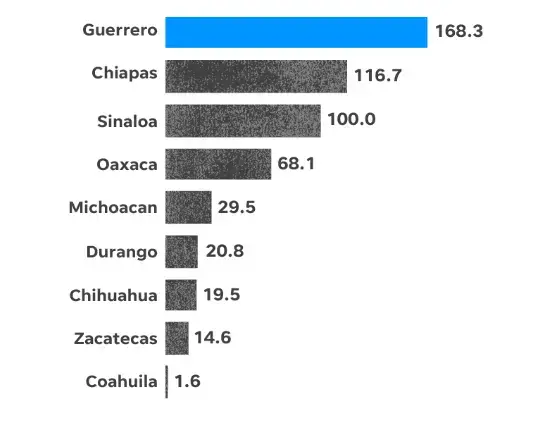
That afternoon, all 34 of Quetzalcoatlán’s families fled the village by car. The community that had once been home to 140 people became a ghost town.
As Mexico’s drug war stretches into its 13th year, cartel-related violence is seeping into the most remote corners of Guerrero, a state in southwest Mexico. In extreme situations, entire communities are fleeing violence associated with drug trafficking and warring criminal organizations, leaving behind their homes and in many cases, the land they lived on and worked for generations.
Indigenous Mexican communities are more likely to be victims of forced displacement, according to the Mexican Commission in Defense and Promotion of Human Rights. Less than six percent of the country’s inhabitants spoke an indigenous language in 2010, according to Mexico’s National Institute of Statistics and Geography, yet the human rights commission said indigenous people comprised more than 60 percent of the 20,390 people forcibly expelled in massive displacement events in Mexico in 2017.
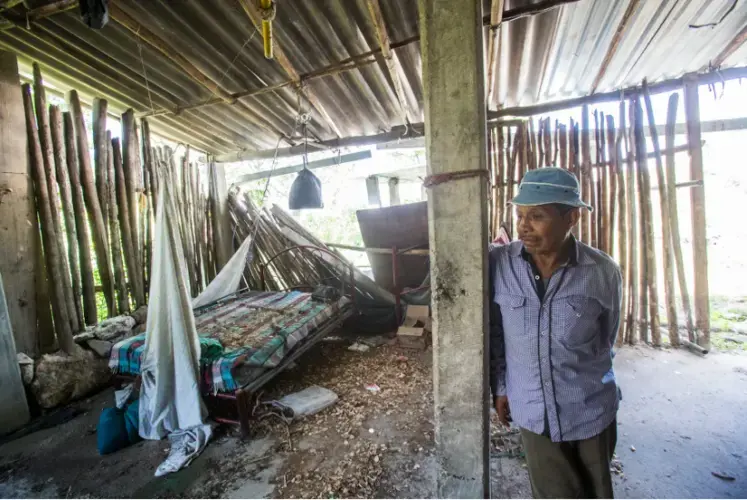
The commission defines “large” displacement events as those that affect at least 10 families or 50 people, said Brenda Pérez Vázquez with the commission. The agency uses press coverage to track such events, and doesn’t track individuals or individual families forced to flee. So the total number of people internally displaced in Mexico, she said, is undoubtedly higher.
When criminal groups threaten isolated indigenous communities or commit violence, poor road conditions and scarce phone service make it hard for people to flee, or for help to arrive. And when indigenous villagers are displaced, they face challenges requesting help, due to language barriers. Most of the residents of Quetzalcoatlán, for example, speak the indigenous language Nahuatl, and little Spanish.
For some indigenous Mexicans, in-country, forced migration is the first step toward international migration. Asylum is still a foreign concept in most indigenous Mexican communities, but many people who were displaced by drug-related violence from the southwest states of Guerrero and Oaxaca have entered the United States without authorization and are working as migrant farmworkers, traveling between California, Oregon and Washington, according to Luis López Resendiz, California coordinator for the Binational Front of Indigenous Organizations, a group that advocates for indigenous communities in the United States and Mexico.
Angelina Trujillo, an immigration court interpreter who speaks the indigenous language Mixtec, has observed a similar trend in California courtrooms. She said she has provided interpretation services for many young, indigenous people who fled the mountains of Guerrero and were apprehended by U.S. immigration officials while trying to cross the border without authorization.
Trujillo said she often hears the migrants, who are typically between the ages of 17 and 23, tell the judge, “we have to leave the community because there are drug [gangs] and they’re taking away our land.”
As tens of thousands of Central American and Mexican migrants have sought asylum in the U.S. in recent years, tens of thousands more Mexicans have been forced to migrate within their own country. In 2017, there were 25 episodes of massive internal displacement in Mexico, according to the country’s human rights commission. More than two-thirds of the events were due to violence sparked by criminal organizations, and more than a quarter were spurred by violence related to social, political or territorial conflicts.
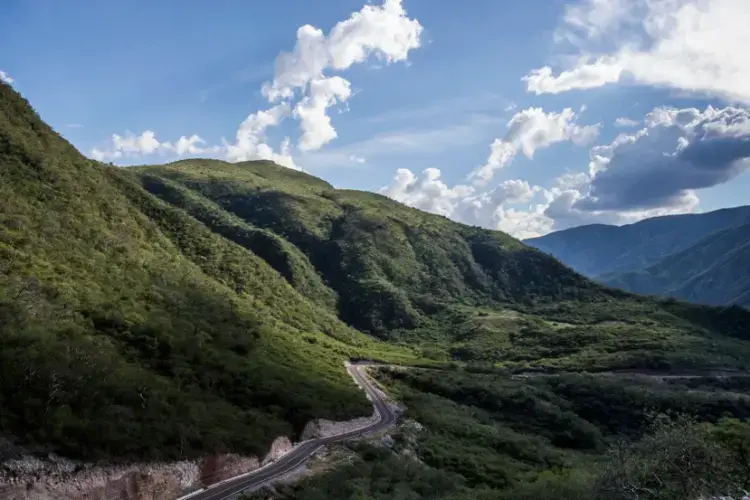
Seven of the 25 displacement episodes occurred in Guerrero, the Mexican state with the most displacement events in 2017, the commission said. That year, 5,948 people in Guerrero fled their homes. Again, displacement disproportionately affected indigenous people. Indigenous Mexicans make up a larger portion of Guerrero’s population than the country as a whole, at roughly 13 percent, according to the country’s statistics agency, but they make up 61 percent of those displaced in massive events in the state in 2017, the commission said.
Guerrero secretary of state Florencio Salazar Adame, meanwhile, estimates about 870 people were displaced by violence between January 2017 and October 2018. Forced displacement is a problem in Guerrero, Salazar Adame said in an interview.
Internal displacements in Mexico in 2017
Guerrero makes up only 3 percent of Mexico’s population, but it accounts for a quarter of massive internal displacement events
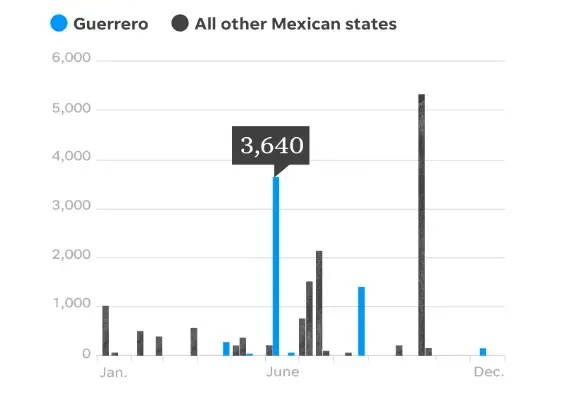
“It’s a consequence of the unfortunate violence we’re experiencing,” he said.
The state’s numbers are lower than the human rights commission’s, Salazar Adame said, because the government only counts cases in which people seek help from local authorities. And sometimes, he added, people are afraid to report displacement to the government.
“We have encountered situations, for example, where groups of displaced people don’t want to be helped,” he said. “When we ask them why they don’t want support, it’s because they feel threatened and they say there could be fatal repercussions the moment they turn to the government.”
The Desert Sun traveled to indigenous communities in Guerrero, Mexico, to capture what spurs people to initially flee and seek protection elsewhere — and what awaits them if they attempt to return home.
The massacre ‘was not an accident’
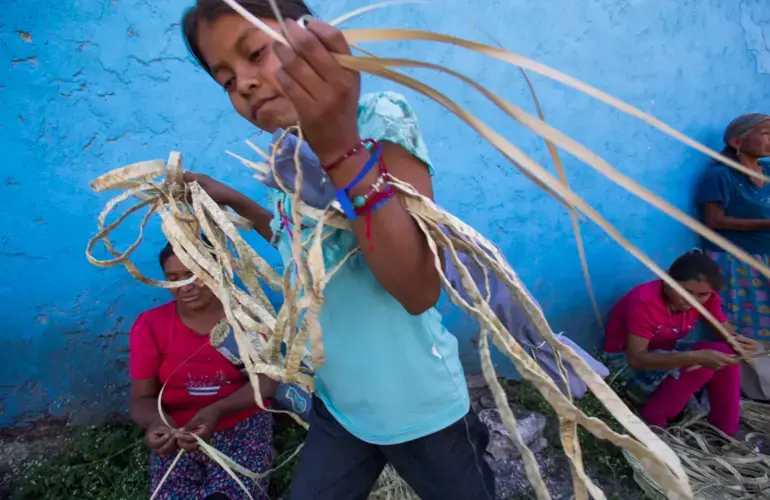
The residents of Quetzalcoatlán sobbed as they heaved dead men, fully clothed, limbs bloodied and mangled, into plain wood caskets.
A local journalist who arrived in the village hours after the 2016 massacre captured the aftermath of the attack on video. After residents loaded one of the six victims into a casket, the video shows a woman leaning over the body and swiping her fingers over his eyelids to close them. She wiped tears from her eyes, then covered his body with a sheet, as a state police officer standing in the background watched her say goodbye.
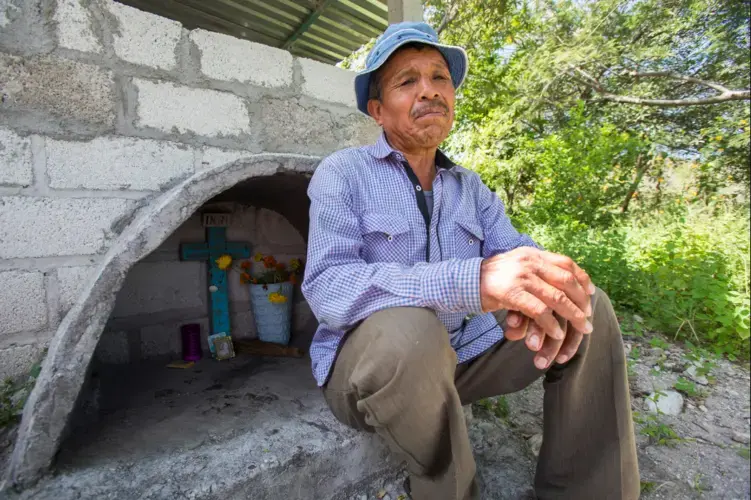
The Nahuatl-speaking villagers stacked the caskets, which were provided by the municipal government, in the back of a pickup truck, leaving trails of splattered blood on the ground.
Quetzalcoatlán, like most of Mexico’s indigenous communities, is extremely poor. Nearly three-quarters of Mexico’s indigenous population lives in poverty, according to a 2018 report from the National Council for the Evaluation of Social Development Policy. One in five of the country’s indigenous population cannot read or write, and one in six lacks access to health services, the agency said.
The same afternoon as the massacre, all 34 families deserted their community, their homes made of sticks and palm, their fields of corn, beans and squash, and their goats, pigs and chickens. They also left behind the village’s namesake palm trees. The residents traditionally dry the large fronds and then braid long, thin strips of leaves, which they sell at craft markets. Buyers weave them into hats and baskets.
The residents fled to Zitlala, the capital of the municipio, a county-like political subdivision, about two hours away by car. There, they buried their dead in Zitlala’s cemetery.
Cartel violence has crept into the most remote areas of Guerrero, disproportionately affecting the area's indigenous communities. Video by Vicki Connor/The Desert Sun. Mexico, 2019.
A representative for the Guerrero government did not respond to questions about whether there was an official investigation into the January 2016 massacre. But Manuel Olivares Hernández, director of the José María Morelos y Pavón Regional Center in Defense of Human Rights, who advocates for Guerrero’s communities displaced by violence, said the government never investigated the killings. He said the residents were too afraid to report the crime and serve as witnesses.
In Guerrero, 96.8 percent of crimes went unreported or uninvestigated in 2017, according to Mexico’s statistics office. Guerrero had the highest rate of unreported or uninvestigated crimes of any state in the country that year.
Without a formal investigation, Olivares Hernández said he’s concluded the massacre was a consequence of Mexico’s extended drug war, which has resulted in drug cartels splintering into smaller, more nimble organizations, like the one that stormed Quetzalcoatlán.
Former Mexican president Felipe Calderón launched a massive campaign against the cartels after he assumed office in 2006. He deployed several thousand Mexican military troops and federal police to fight the groups in drug trafficking hot spots around the country.
Calderón’s strategy was to eliminate the leaders of the cartels. The government made some dramatic arrests, but few of the captured kingpins were prosecuted or convicted, according to a 2018 report from the Congressional Research Service. And as cartel leaders were captured or killed, other members created new groups.
“The fact that an armed group entered a community and killed six people was not an accident,” Olivares Hernández said. “It has a lot to do with the growth and development of organized crime groups in the state of Guerrero.”
In central Guerrero, two smaller criminal groups are now warring for control over the region’s transportation routes, production areas and workforce, according to Olivares Hernández.
One group, Los Rojos, inherited control of the region from the state’s first drug trafficking organization, the Beltrán Leyva group. By 2012, Los Rojos controlled the city of Chilapa and other gateway cities along a highway leading east to a mountainous region where poppies are grown.
But by 2014, another group, Los Ardillos, had aggressively pushed into Chilapa and challenged Los Rojos. In May 2015, hundreds of armed men associated with Los Ardillos poured into Chilapa in broad daylight. During the following five days, the balaclava- and bandanna-clad men roamed the town searching for suspected members of Los Rojos. At least 16 people disappeared.
They’re not detaining anybody, they’re not investigating and they’re not punishing the people who are responsible for all of this barbarity.
As the groups have fought over new territories, Olivares Hernández said, they’ve given residents three options: Join, leave or die. He suspects one of the criminal groups tried to recruit the community members in Quetzalcoatlán to guard a major road that connects the state of Guerrero to Mexico City. He said it’s likely the Quetzalcoatlán residents refused to work for the group, so the organization retaliated.
Olivares Hernández said the state government hasn’t held anybody accountable for the violence that has displaced entire communities in Guerrero. Rather, he said, authorities only respond by providing victims of displacement with assistance, like food rations or rent money.
“They’re not detaining anybody, they’re not investigating and they’re not punishing the people who are responsible for all of this barbarity,” Olivares Hernández said.
‘They end up with nothing’
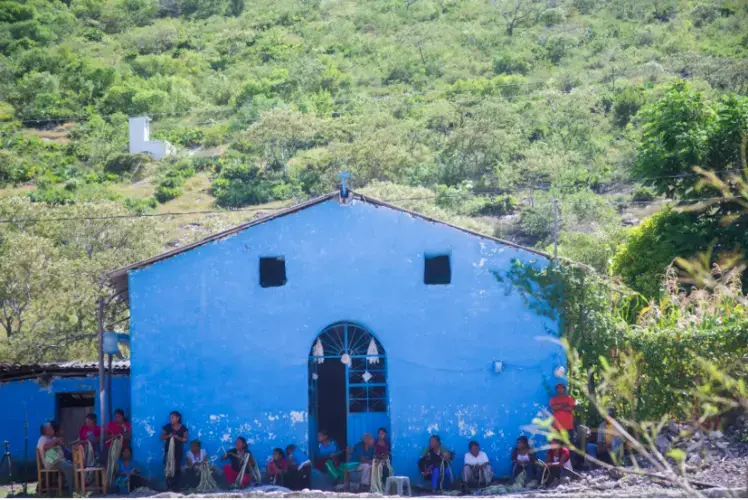
Local officials housed the Quetzalcoatlán migrants in a municipal auditorium in Zitlala for more than 20 days. After that, they crammed into one house that the municipal government rented for them. State police guarded them around the clock.
But the displaced residents of Quetzalcoatlán felt cooped up in Zitlala.
They were used to growing nearly all their food. In Zitlala, the government fed them. They were accustomed to hiking through the mountains to cut the leaves they use for their craft. In the city, they bought long strips of palm for about $3 — a burdensome price for the impoverished farmers.
“If the little they have — their land — is taken away from them, they end up with nothing,” said Bernardo Torres, a reporter based in Guerrero’s capital, Chilpancingo, who covered the massacre and its aftermath. “They don’t have anywhere to go, so they end up displaced, migrating to other cities, other states in the country or to the United States.”
People displaced by violence generally have two options, said Salazar Adame, Guerrero’s secretary of state. They can return home once security has been restored or, if they can’t return, the government will assign people a new piece of property, where they can build new homes and work new plots of land or find another form of employment.
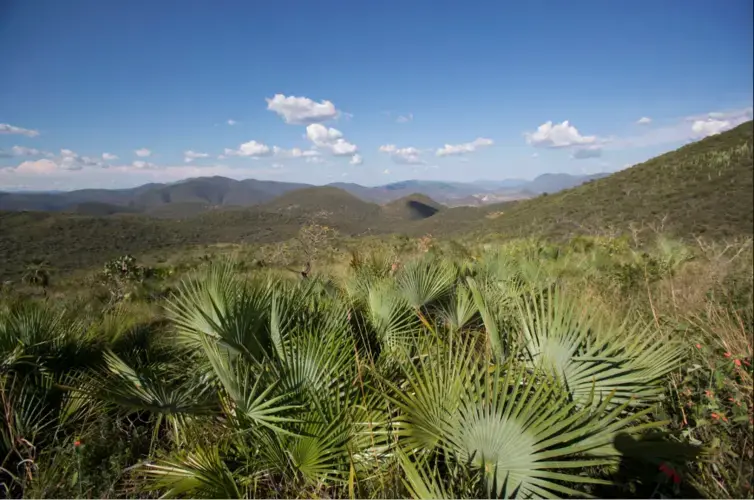
The president of the municipio of Zitlala offered the two options to the migrants from Quetzalcoatlán.
“We want to return to our community,” Salomon Lara Tlaltempa, a Quetzalcoatlán resident, recalled telling the municipal president. “We already have our houses there. We have our small plots of land to farm.”
We want to return to our community. We already have our houses there. We have our small plots of land to farm
Spring was approaching and they were anxious to prepare the fields for another season. So when the state government offered people sacks of corn, money, sleeping mats, blankets and other provisions, 16 families accepted and returned home — two and a half months after the massacre.
When the residents of Quetzalcoatlán returned home in March 2016, no barking dogs welcomed them. Their goats, pigs and chickens were gone.
“Everything was silent,” Olivares Hernández said. “There wasn’t a single sound.”
The next time he visited the community, he brought a few dogs.
‘Still a little risky’
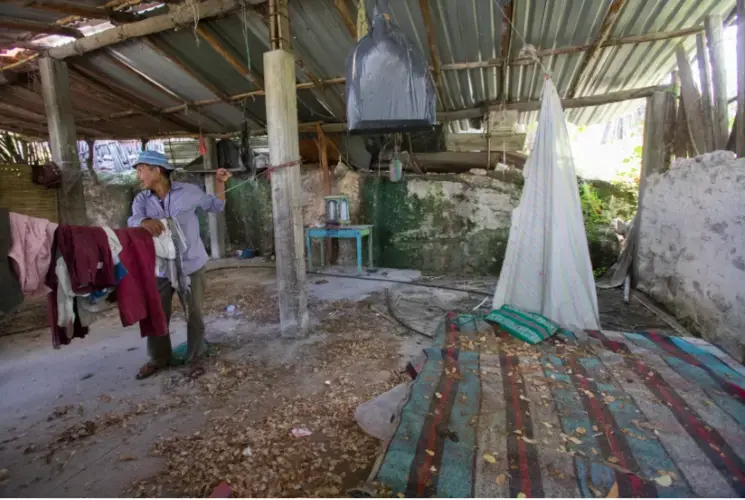
Many people never returned to Quetzalcoatlán. Some went to work in the fields of northern Mexico, while others migrated to the United States, according to media reports.
The U.S. Census doesn’t specifically include an option in its race and ethnicity categories for indigenous Mexicans living in the U.S. But there were an estimated 685,000 indigenous Latinos residing in the U.S. as of 2010, according to a 2013 report from the University of California; it estimated that 95 percent of those people were of Mexican origin.
Vivian Newdick, an independent scholar who works with the Binational Front of Indigenous Organizations in Texas, said it’s also difficult to determine how many indigenous people attempted to migrate north and are currently detained in immigrant detention centers. The U.S. Department of Homeland Security, U.S. Customs and Border Protection and U.S. Immigration and Customs Enforcement don’t track how many people in detention centers speak indigenous languages, she said.
Immigrant advocates have criticized U.S. immigration agencies for providing inadequate translation services to indigenous people. The lack of translation services means U.S. asylum officers sometimes interview indigenous language speakers in Spanish, according to a 2015 memo sent from the CARA Family Detention Pro Bono Project, a coalition of immigrant advocacy groups, to Homeland Security.
Only about 60 people were living in Quetzalcoatlán in October 2018 — half as many as in 2016. A team of seven state police officers guard the community around the clock. The residents trust the police to protect them, Olivares Hernández said, but worry the government will recall the officers, leaving the community unprotected and vulnerable to another attack.
There haven’t been any other incursions into the community since January 2016 yet, “the families that remain here still live with the psychosis that they can be attacked,” said officer Hilario Gallardo Lucas, who wore a semi-automatic rifle slung across his chest.
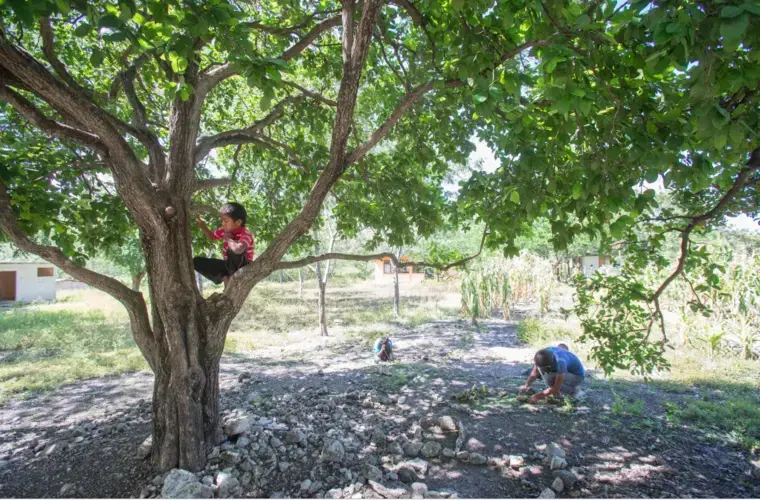
The state police also accompany the Quetzalcoatlán residents when they need to leave the village and travel to nearby cities, Gallardo Lucas said.
“Leaving here is still a little risky,” he said.
Resident Salomon Lara Tlaltempa carries evidence of the risk on his body. He was shot in July 2017, a year and a half after the massacre, when he and another resident, Benigno Marabel Tlaltempa, went to Zitlala to collect a farm subsidy.
In Zitlala, a young man in a truck stopped and asked the two where they were from. They told the young man they were from Quetzalcoatlán. The young man removed a gun from his belt and shot and killed Marabel Tlaltempa. Lara Tlaltempa said he tried to wrestle the gun from the man, but failed. The man shot Lara Tlaltempa, too.
Lara Tlaltempa started running toward a local government office. He was bleeding.
“I withstood the pain for about 50 meters,” he said. He collapsed, and was eventually transported to a hospital in Chilapa, where he spent a month and a half recovering.
Olivares Hernández said he believes Lara Tlaltempa was targeted for speaking up for his community.
Now, Lara Tlaltempa cannot quite curl his fingers into a fist. His nerves are too damaged, he explained. When he puts on the baseball cap he was wearing that July day, a hole in the brim shows where a bullet blew through the hat and hit him between his right eye and ear.
‘The people continue to suffer’
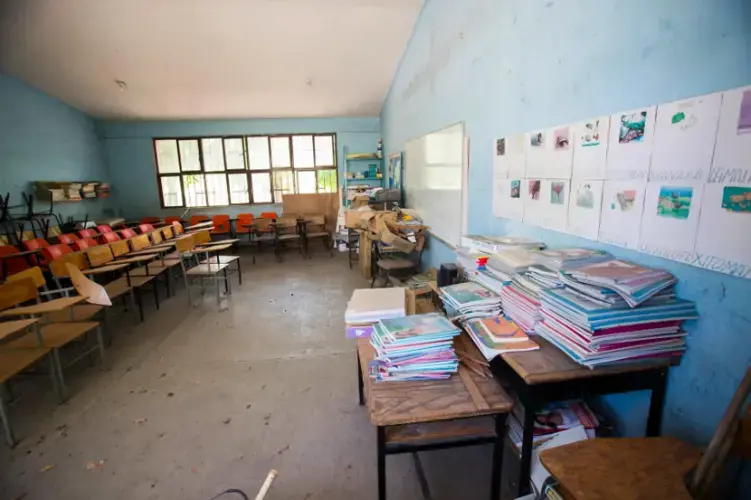
More people from Guerrero’s indigenous communities have been displaced in recent months.
In early November, more than 70 Nahuatl-speaking people from the community of Tlaltempanapa were threatened by the same group that displaced the Quetzalcoatlán residents, according to Olivares Hernández. Just like the residents of Quetzalcoatlán, the residents of Tlaltempanapa fled to a neighboring city, where the government provided them blankets, sleeping mats and food.
More than three months later, the migrants from Tlaltempanapa have refused to go home. They believe if they return to the village and don’t cooperate with the criminal group, they will be kidnapped or killed, according to Olivares Hernández, who is advocating for them. They are requesting the state government provide them with new property, where they can build homes and plant crops, he said.
Olivares Hernández criticized the state government officials who have provided resources to caravans of Central American migrants, instead of helping Mexico’s own displaced people. He said state governments provided buses and resources to caravan members in fall 2018, with the goal of quickly moving them through each respective state. Meanwhile, he said, officials are slow to respond to cases of massive forced displacement, until media reports and human rights groups pressure them into action.
We could say that the number of people displaced by violence in Guerrero is greater than the number of people in the Central American migrant caravan, but the government has tried to make them invisible.
“We could say that the number of people displaced by violence in Guerrero is greater than the number of people in the Central American migrant caravan, but the government has tried to make them invisible,” he said.
Life in Quetzalcoatlán hasn’t returned to normal. Reminders of the massacre dot the village. Small concrete altars, adorned with crosses, vases of marigolds and candles, memorialize the six men where they were killed. Residents still occasionally light the candles.
Empty desks, piles of unused textbooks and fading vocabulary word posters are the only signs of the education that used to take place in the now-locked schoolhouse. The municipal government no longer sends a teacher regularly to instruct the remaining 12 children. The village’s health center has a few bottles of medication on its dusty shelves, but it too is locked. Medical professionals no longer travel to Quetzalcoátlan, due to violence in the region.
The state police officers patrol only the residential parts of Quetzalcoatlán. As a result, Olivares Hernández said, people are afraid to cut palm leaves or harvest crops in the mountains and fields that border the community, where Quetzalcoatlán residents believe the armed men came from.
“They only work one part of their land, the northern part, where they think the armed men can’t easily get to,” Olivares Hernández said. “The people continue to suffer.”
Residents said they remain afraid to travel outside of Quetzalcoatlán, too, unsure whom they might encounter on the roads or in other cities. So the residents stopped traveling regularly to markets to sell their braided palm leaves. Instead, they now rely on people coming to Quetzalcoatlán to buy their craft, at a lower price.
“The entire social fabric of the community has been destroyed,” Olivares Hernández said, “because life isn’t the same as it was before January 6.”





